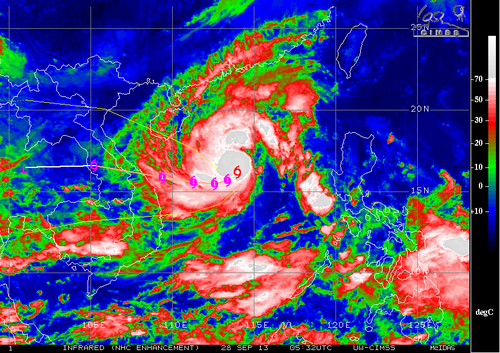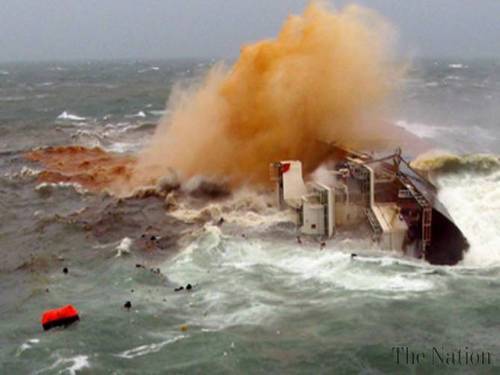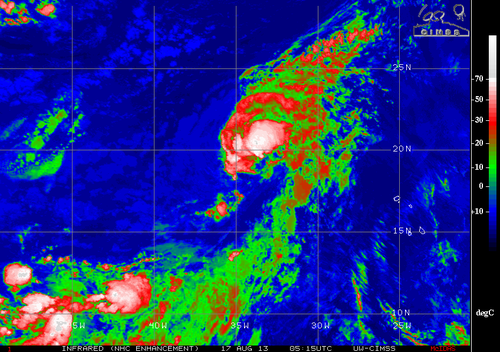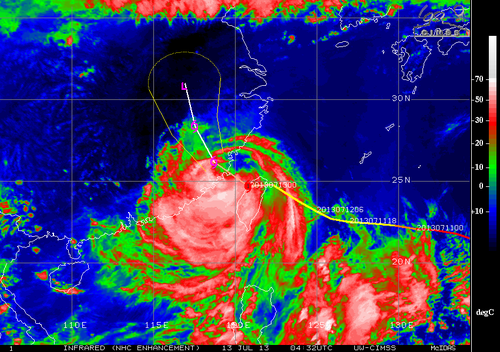India Braces for Super Cyclone Phailin
An extremely powerful cyclone churning in the Bay of Bengal is targeting India’s east coast and is expected to make landfall this morning. This is one of the strongest cyclones India has seen in recent history and the strongest since 1999. Phailin has maintained category five status since Friday afternoon and is expected to only slightly weaken to a high end category four (as its eyewall moves over land) before making landfall. Conditions were primed for quick intensification on Thursday; SSTs approaching the 30°C mark and shear quite low. Phailin went from a tropical cyclone to category four on Thursday thanks to these ideal conditions for intensification. Already, India has evacuated tens of thousands of residents from low lying coastal areas but Phailin still has the potential to wreak much havoc on India. Already one death has been reported associated with a tree falling onto a house as of Friday night.
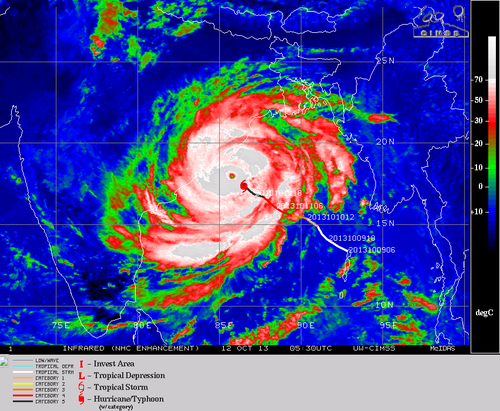
Storm surge will be a real problem with this cyclone – a forecasted 11 foot storm surge is expected to arrive as Phailin makes landfall near Brahmapur. The good news is that the coastline goes up in elevation fairly quickly as you move inland, therefore residents that should be most concerned with storm surge should be the ones that live near shorelines. With category five cyclones like this one winds as well as flooding problems are almost a given. In this case, winds will be sustained over 240km/h, gusting over 300km/h, and anywhere from 200mm to 350mm can be expected to fall around where Phailin makes landfall. The cyclone is expected to move inland and die off fairly quickly as it moves over land as opposed to being over warm ocean waters.
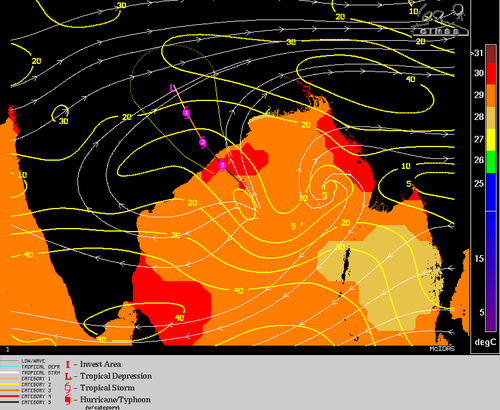
Another storm; typhoon Nari is currently threatening Vietnam to make landfall at the beginning of next week. It is still recovering from its passage over the rugged islands of the Philippines but is expected to strengthen to a category three typhoon over the South China Sea before landfall. Models are suggesting yet another typhoon to spin up behind Nari but this one is expected to take a turn towards Japan. So, overall a very active weekend and upcoming week cyclone and typhoon-wise!
